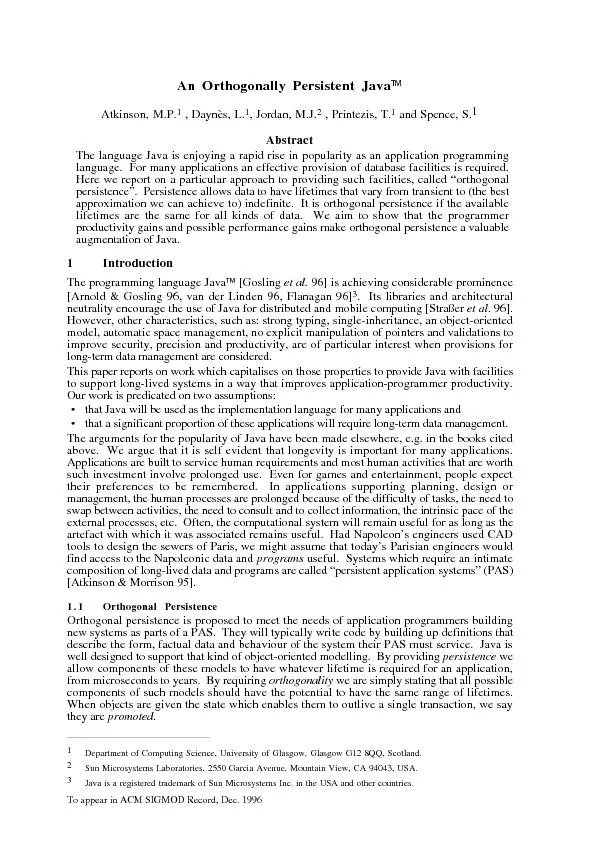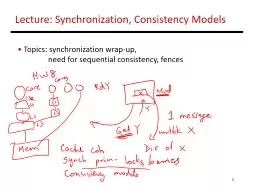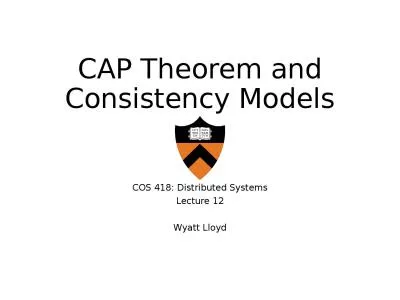PPT-Loose-Ordering Consistency for Persistent Memory
Author : yoshiko-marsland | Published Date : 2017-08-16
Youyou Lu 1 Jiwu Shu 1 Long Sun 1 Onur Mutlu 2 1 Tsinghua University 2 Carnegie Mellon University Problem Strict write ordering required for storage consistency
Presentation Embed Code
Download Presentation
Download Presentation The PPT/PDF document "Loose-Ordering Consistency for Persisten..." is the property of its rightful owner. Permission is granted to download and print the materials on this website for personal, non-commercial use only, and to display it on your personal computer provided you do not modify the materials and that you retain all copyright notices contained in the materials. By downloading content from our website, you accept the terms of this agreement.
Loose-Ordering Consistency for Persistent Memory: Transcript
Download Rules Of Document
"Loose-Ordering Consistency for Persistent Memory"The content belongs to its owner. You may download and print it for personal use, without modification, and keep all copyright notices. By downloading, you agree to these terms.
Related Documents














